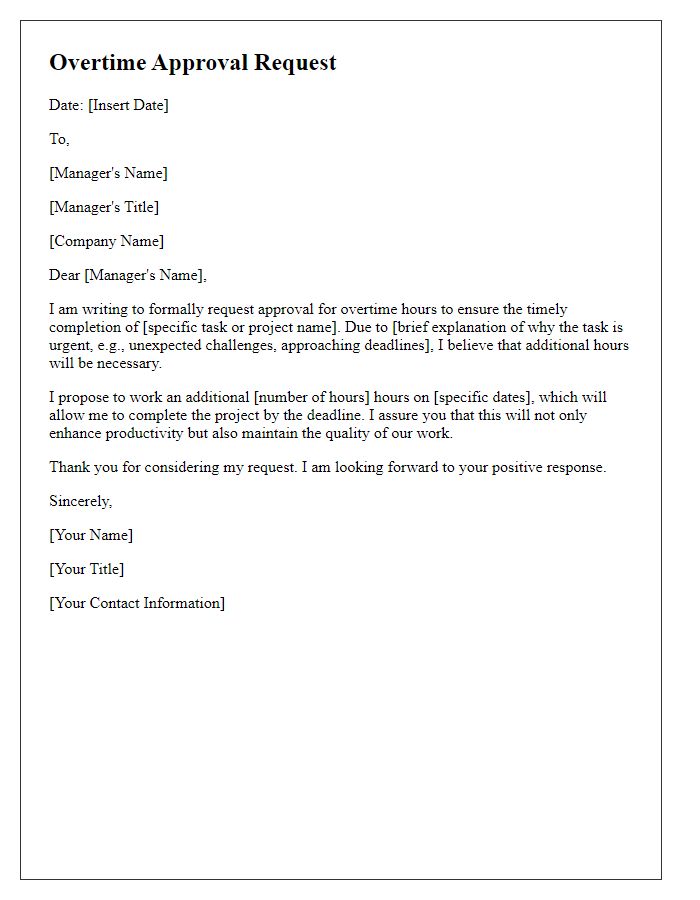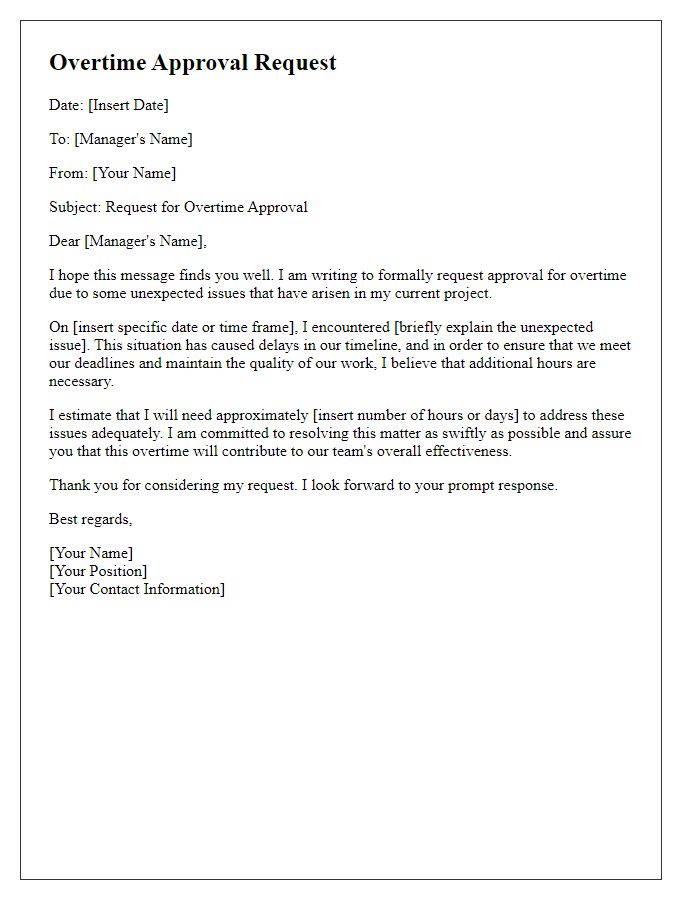Are you feeling overwhelmed with your workload and in need of some extra hours? We all face moments when the demands of our job exceed the regular schedule, and asking for overtime can be a bit daunting. In this article, we'll explore a simple yet effective letter template for requesting overtime approval that communicates your needs professionally and assertively. Keep reading to discover how to craft the perfect request that can help you balance your workload and meet your deadlines.

Purpose and Justification
Employees frequently seek overtime approval when workload exceeds regular hours, particularly during peak periods such as fiscal year-end (for instance, March for many companies). Justification often includes project deadlines, unexpected staff shortages, or critical tasks requiring immediate attention, like compliance audits or product launches. Management may assess the necessity of overtime based on current productivity metrics, employee performance, and overall project timelines. Ensuring proper documentation of overtime requests is essential for budget management, as excessive overtime may inflate payroll expenses significantly, impacting quarterly financial reports. Additionally, adhering to labor regulations regarding working hours safeguards employee well-being and organizational compliance.
Duration and Schedule
An overtime approval request should highlight the specific duration of the proposed extra working hours and the detailed schedule outlining when the overtime will occur. Indicate the start date and end date, specifying the total number of hours needed. For example, a request might state: "Requesting approval for 10 hours of overtime from March 10 to March 15, 2023, with work scheduled from 5 PM to 9 PM each evening." This detail provides a clear understanding of the commitment required, allowing management to assess workflow and resource allocation effectively.
Task Details and Responsibilities
An overtime approval request outlines the additional hours needed for specific tasks related to a project or workload. Duties may include completing urgent assignments, meeting deadlines, or addressing increased demands during peak seasons, such as during fiscal year-end or major product launches. Documentation of timeframes, such as the start date on March 1, 2023, and the expected duration of the overtime, usually within the following week, should be included for clarity. Responsibilities may involve collaborating with team members to finalize reports, resolving client issues, and preparing presentations for upcoming board meetings, ensuring that all deliverables meet quality standards and are submitted on time.
Impact on Current Projects
Excessive workload often necessitates overtime approval, especially on critical projects like the new software development for Company X. Current deadlines for Phase 2 implementation scheduled for November 15, 2023, require extra hours to ensure on-time delivery. The team has experienced a 30% increase in tasks due to unexpected client demands, leading to potential delays. Dedicated resources, such as the five-member development team, significantly influence project outcomes. Their extended hours directly enhance productivity metrics and improve overall project quality. Concerns over meeting stakeholder expectations compound the urgency for additional time, which is vital for project completion and customer satisfaction.
Manager Approval and Signature
Overtime pay rates are usually 1.5 times the regular hourly wage in many companies. Employees often request overtime approval when work demands exceed standard hours, typically 40 hours per week in the United States. In scenarios like project deadlines or unexpected staffing shortages, employees may seek authorization for additional hours worked. Proper documentation includes details of the employee's name, work schedule, reason for overtime, and the time period of the additional work. Management signatures are essential for validation, ensuring the overtime aligns with company policy and budget constraints. This process promotes accountability and keeps records clear for payroll processing.
Letter Template For Overtime Approval Request Samples
Letter template of overtime approval request for special event preparation.

Letter template of overtime approval request for urgent task completion.












Comments